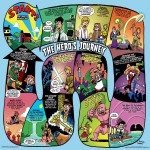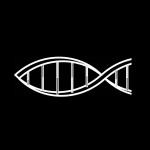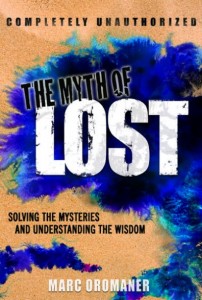 Enlightenment. The moment we consciously connect to eternal truth. It’s when we see through the veil of this illusionary world, rising above ego, time, materialism, and our own emotions to see the bigger picture—that we are all one. It’s what all gurus, spiritualists, yogis, Buddhists, monks, meditators, shamans, artists, writers, and religious leaders strive for. It’s the state Neo reached at the end of The Matrix, the level Dorothy attained so she could surpass time and space and return home, and the brief moment you get a taste of, usually in the shower, when your brain skips a beat on the record of reality, resulting in a little inspiration in line with your true self. But is there any way to speed up the process or at least know how close you are to the fully enlightened experience? I believe there is. And it’s something so unbelievably simple, you’ll be able to master it shortly after reading this blog posts.
Enlightenment. The moment we consciously connect to eternal truth. It’s when we see through the veil of this illusionary world, rising above ego, time, materialism, and our own emotions to see the bigger picture—that we are all one. It’s what all gurus, spiritualists, yogis, Buddhists, monks, meditators, shamans, artists, writers, and religious leaders strive for. It’s the state Neo reached at the end of The Matrix, the level Dorothy attained so she could surpass time and space and return home, and the brief moment you get a taste of, usually in the shower, when your brain skips a beat on the record of reality, resulting in a little inspiration in line with your true self. But is there any way to speed up the process or at least know how close you are to the fully enlightened experience? I believe there is. And it’s something so unbelievably simple, you’ll be able to master it shortly after reading this blog posts.
 When you’ve seen as many movies as I have, you begin to see that they all follow a certain pattern. This is true not just of movies, but of all great stories ranging from those found in classic mythology and literature to modern TV series and video games. Joseph Campbell called it the monomyth or hero’s journey. It’s basically a series of steps that the protagonist must go through during the course of his or her adventure. In addition to this, there are also a number of spiritual principles that often find their way into storytelling. By combining these principles with the monomyth, you can pretty much figure out where just about any story is headed. While this skill has proven to be incredibly annoying to my wife, it’s come in very handy for me. Not because I’ve continually annoyed her with my usually correct movie and TV show predictions, but because I’ve noticed that these storytelling rules apply to more than just fictitious stories. They also apply to real life.
When you’ve seen as many movies as I have, you begin to see that they all follow a certain pattern. This is true not just of movies, but of all great stories ranging from those found in classic mythology and literature to modern TV series and video games. Joseph Campbell called it the monomyth or hero’s journey. It’s basically a series of steps that the protagonist must go through during the course of his or her adventure. In addition to this, there are also a number of spiritual principles that often find their way into storytelling. By combining these principles with the monomyth, you can pretty much figure out where just about any story is headed. While this skill has proven to be incredibly annoying to my wife, it’s come in very handy for me. Not because I’ve continually annoyed her with my usually correct movie and TV show predictions, but because I’ve noticed that these storytelling rules apply to more than just fictitious stories. They also apply to real life.
 Ah, the enlightened life! A life where the superficial trappings of the material world have lost their luster. Where greasy, fried, and fatty foods are no longer tempting. Where meditation, sharing, and an appreciation of the beauty of nature provide all the fulfillment one needs for true happiness. And yet, considering how healthy, content, and self-fulfilled spiritual people claim to be, why are they plagued with so many health, wealth, and happiness issues? Is poverty a requirement of enlightenment? Is self-indulgence selfish? Is self-love a sign of an inflated ego? The irony is that most spiritual people are just as egotistical as materialistic people—perhaps even more so since they believe themselves to be so far above everyone else. Sacrifice and ascetic behavior do not make one spiritual. Denying the material for the sake of the spirit misses the big picture. To be truly fulfilled, one needs to embrace both of these worlds, creating more than a holy life, but a wholly life.
Ah, the enlightened life! A life where the superficial trappings of the material world have lost their luster. Where greasy, fried, and fatty foods are no longer tempting. Where meditation, sharing, and an appreciation of the beauty of nature provide all the fulfillment one needs for true happiness. And yet, considering how healthy, content, and self-fulfilled spiritual people claim to be, why are they plagued with so many health, wealth, and happiness issues? Is poverty a requirement of enlightenment? Is self-indulgence selfish? Is self-love a sign of an inflated ego? The irony is that most spiritual people are just as egotistical as materialistic people—perhaps even more so since they believe themselves to be so far above everyone else. Sacrifice and ascetic behavior do not make one spiritual. Denying the material for the sake of the spirit misses the big picture. To be truly fulfilled, one needs to embrace both of these worlds, creating more than a holy life, but a wholly life.
 Ever since Darwin published his infamous On the Origin of the Species in 1859, science and theology have been at war over the theory of evolution. The irony is that evolution and all its aspects—natural selection, survival of the fittest, genetic mutations—all appear in the Bible as clear as day. In fact, even the missing link of the explanation that science has still not uncovered appears in there as well. Is it found in some lost book, obscure passage, cryptic verse, or esoteric translation? No, it appears in an entire story that everyone knows—the story of Noah’s Ark. And once I point out the metaphoric meaning of the story, you’ll wonder how on earth you never noticed it before. How? The church didn’t want you to notice. Because the truth takes power away from them and puts it where it rightfully belongs—to you.
Ever since Darwin published his infamous On the Origin of the Species in 1859, science and theology have been at war over the theory of evolution. The irony is that evolution and all its aspects—natural selection, survival of the fittest, genetic mutations—all appear in the Bible as clear as day. In fact, even the missing link of the explanation that science has still not uncovered appears in there as well. Is it found in some lost book, obscure passage, cryptic verse, or esoteric translation? No, it appears in an entire story that everyone knows—the story of Noah’s Ark. And once I point out the metaphoric meaning of the story, you’ll wonder how on earth you never noticed it before. How? The church didn’t want you to notice. Because the truth takes power away from them and puts it where it rightfully belongs—to you.
 When I was a kid, someone pointed out that the shape of the inside of your ear was similar to the shape of how you looked as a fetus. At the time, I chalked it up to one of those fantastical things kids say to exaggerate a correlation. But years later in advertising school, one of my professors had us gather the leaves from a lemon tree and then look at how it compared to the shape of the tree itself. Amazingly, the veins of the leaf seemed to match the branches of the tree, and the leaf’s shape was similar to the tree’s overall shape. Could it be possible that the parts of a living object represent the whole? And if so, how far back could we go to see similarities of ourselves as a society—to the lines in our palms, the DNA in our genes, or even the atoms in our bodies?
When I was a kid, someone pointed out that the shape of the inside of your ear was similar to the shape of how you looked as a fetus. At the time, I chalked it up to one of those fantastical things kids say to exaggerate a correlation. But years later in advertising school, one of my professors had us gather the leaves from a lemon tree and then look at how it compared to the shape of the tree itself. Amazingly, the veins of the leaf seemed to match the branches of the tree, and the leaf’s shape was similar to the tree’s overall shape. Could it be possible that the parts of a living object represent the whole? And if so, how far back could we go to see similarities of ourselves as a society—to the lines in our palms, the DNA in our genes, or even the atoms in our bodies?
 You’ve seen it hundreds of times. Some guy is being interviewed by the local news after he helped prevent some crime or rescued someone in distress. The reporter asks, “Do you consider yourself a hero?” Apparently, this question must be asked in order to test whether or not said person is in fact a hero. According to local news rules of heroism, the man is only a hero, if and only if, he claims to not be one. Most people, knowing this rule, go on to say that they don’t consider themselves to be a hero because they just did what anyone in their situation would’ve done. The reporter then cuts back to the anchorpeople who disagree with the man’s assessment. Feeling that the hero test was passed, they comment about what a true hero the man is while a colorful “local hero” graphic displays besides them. Personally though, I agree with the guy. He’s not a hero.
You’ve seen it hundreds of times. Some guy is being interviewed by the local news after he helped prevent some crime or rescued someone in distress. The reporter asks, “Do you consider yourself a hero?” Apparently, this question must be asked in order to test whether or not said person is in fact a hero. According to local news rules of heroism, the man is only a hero, if and only if, he claims to not be one. Most people, knowing this rule, go on to say that they don’t consider themselves to be a hero because they just did what anyone in their situation would’ve done. The reporter then cuts back to the anchorpeople who disagree with the man’s assessment. Feeling that the hero test was passed, they comment about what a true hero the man is while a colorful “local hero” graphic displays besides them. Personally though, I agree with the guy. He’s not a hero.
 Those who move in spiritual circles often talk about how we are all connected, that our thoughts create our future reality, and that the universe provides us with clues about our direction in life. Personally, I look at spiritual principles as scientific rules that we just don’t understand yet. Not too long ago, the idea that people could get sick from tiny bugs they couldn’t see or that invisible waves could carry images or music was thought to be magical thinking, until science proved it to be true. So if these spiritual principles are indeed a rule of our universe, there should be a way to test and predict their occurrence. Doing this on an individual scale might prove challenging though, since one person’s thoughts may not have enough energy to make something manifest in a testable way. But what if there were an event that millions of people were focusing on, and this event inspired heated, emotionally charged thoughts that could result in only one of two possible outcomes? If only we had such an event, why, we just might be able to predict the future on a grand scale!
Those who move in spiritual circles often talk about how we are all connected, that our thoughts create our future reality, and that the universe provides us with clues about our direction in life. Personally, I look at spiritual principles as scientific rules that we just don’t understand yet. Not too long ago, the idea that people could get sick from tiny bugs they couldn’t see or that invisible waves could carry images or music was thought to be magical thinking, until science proved it to be true. So if these spiritual principles are indeed a rule of our universe, there should be a way to test and predict their occurrence. Doing this on an individual scale might prove challenging though, since one person’s thoughts may not have enough energy to make something manifest in a testable way. But what if there were an event that millions of people were focusing on, and this event inspired heated, emotionally charged thoughts that could result in only one of two possible outcomes? If only we had such an event, why, we just might be able to predict the future on a grand scale!
 There is certainly no shortage of theories about what may or may not happen on December 21. Of course, nearly all of them will turn out to be wrong. My experience has shown however, that there is one thing you can do that will likely be beneficial regardless of what’s in store for us: think positive.
There is certainly no shortage of theories about what may or may not happen on December 21. Of course, nearly all of them will turn out to be wrong. My experience has shown however, that there is one thing you can do that will likely be beneficial regardless of what’s in store for us: think positive.
 The ancient world has left us with lots of mysteries that have been baffling mankind for millennia. Mysteries like the Great Pyramid of Giza, Stonehenge, the Crystal Skulls, the Nazca Lines, and many more. In addition, our history is filled with unanswered questions about who we are, what inspired the stories of our gods, what all this extra DNA is doing in our genes, and so on. What if I told you that all of these seemingly unrelated mysteries all share the exact same explanation—and that this explanation will completely change life on earth as we know it? Oh, and the epiphany for this explanation hit me while I was watching a horror movie that came out earlier this year. This movie’s tagline was, “You think you know the story. Think again.” The same can be said of this edition of “Answers to Everything.”
The ancient world has left us with lots of mysteries that have been baffling mankind for millennia. Mysteries like the Great Pyramid of Giza, Stonehenge, the Crystal Skulls, the Nazca Lines, and many more. In addition, our history is filled with unanswered questions about who we are, what inspired the stories of our gods, what all this extra DNA is doing in our genes, and so on. What if I told you that all of these seemingly unrelated mysteries all share the exact same explanation—and that this explanation will completely change life on earth as we know it? Oh, and the epiphany for this explanation hit me while I was watching a horror movie that came out earlier this year. This movie’s tagline was, “You think you know the story. Think again.” The same can be said of this edition of “Answers to Everything.”
 Have you ever tried to track down something you saw on TV as a kid, just to see if it was even real? Many of us are occasionally haunted by snippets of movies and shows we vaguely remember watching when we were children. We may wonder if these memories ever really happened, or if they were dreams. Especially when the memories seem incredibly bizarre! Having grown up in the 70s, I caught a LOT of psychedelic stuff on TV as a kid that I’ve become obsessed with tracking down as an adult. Why? Discovering forgotten moments from our youth is the closest thing we have to time travel. We get to relive an experience we had and to see what actually happened. Sometimes, we may even be shocked to find that the story from way back then provides an answer to our lives now.
Have you ever tried to track down something you saw on TV as a kid, just to see if it was even real? Many of us are occasionally haunted by snippets of movies and shows we vaguely remember watching when we were children. We may wonder if these memories ever really happened, or if they were dreams. Especially when the memories seem incredibly bizarre! Having grown up in the 70s, I caught a LOT of psychedelic stuff on TV as a kid that I’ve become obsessed with tracking down as an adult. Why? Discovering forgotten moments from our youth is the closest thing we have to time travel. We get to relive an experience we had and to see what actually happened. Sometimes, we may even be shocked to find that the story from way back then provides an answer to our lives now.
 Enlightenment. The moment we consciously connect to eternal truth. It’s when we see through the veil of this illusionary world, rising above ego, time, materialism, and our own emotions to see the bigger picture—that we are all one. It’s what all gurus, spiritualists, yogis, Buddhists, monks, meditators, shamans, artists, writers, and religious leaders strive for. It’s the state Neo reached at the end of The Matrix, the level Dorothy attained so she could surpass time and space and return home, and the brief moment you get a taste of, usually in the shower, when your brain skips a beat on the record of reality, resulting in a little inspiration in line with your true self. But is there any way to speed up the process or at least know how close you are to the fully enlightened experience? I believe there is. And it’s something so unbelievably simple, you’ll be able to master it shortly after reading this blog posts.
Enlightenment. The moment we consciously connect to eternal truth. It’s when we see through the veil of this illusionary world, rising above ego, time, materialism, and our own emotions to see the bigger picture—that we are all one. It’s what all gurus, spiritualists, yogis, Buddhists, monks, meditators, shamans, artists, writers, and religious leaders strive for. It’s the state Neo reached at the end of The Matrix, the level Dorothy attained so she could surpass time and space and return home, and the brief moment you get a taste of, usually in the shower, when your brain skips a beat on the record of reality, resulting in a little inspiration in line with your true self. But is there any way to speed up the process or at least know how close you are to the fully enlightened experience? I believe there is. And it’s something so unbelievably simple, you’ll be able to master it shortly after reading this blog posts.










